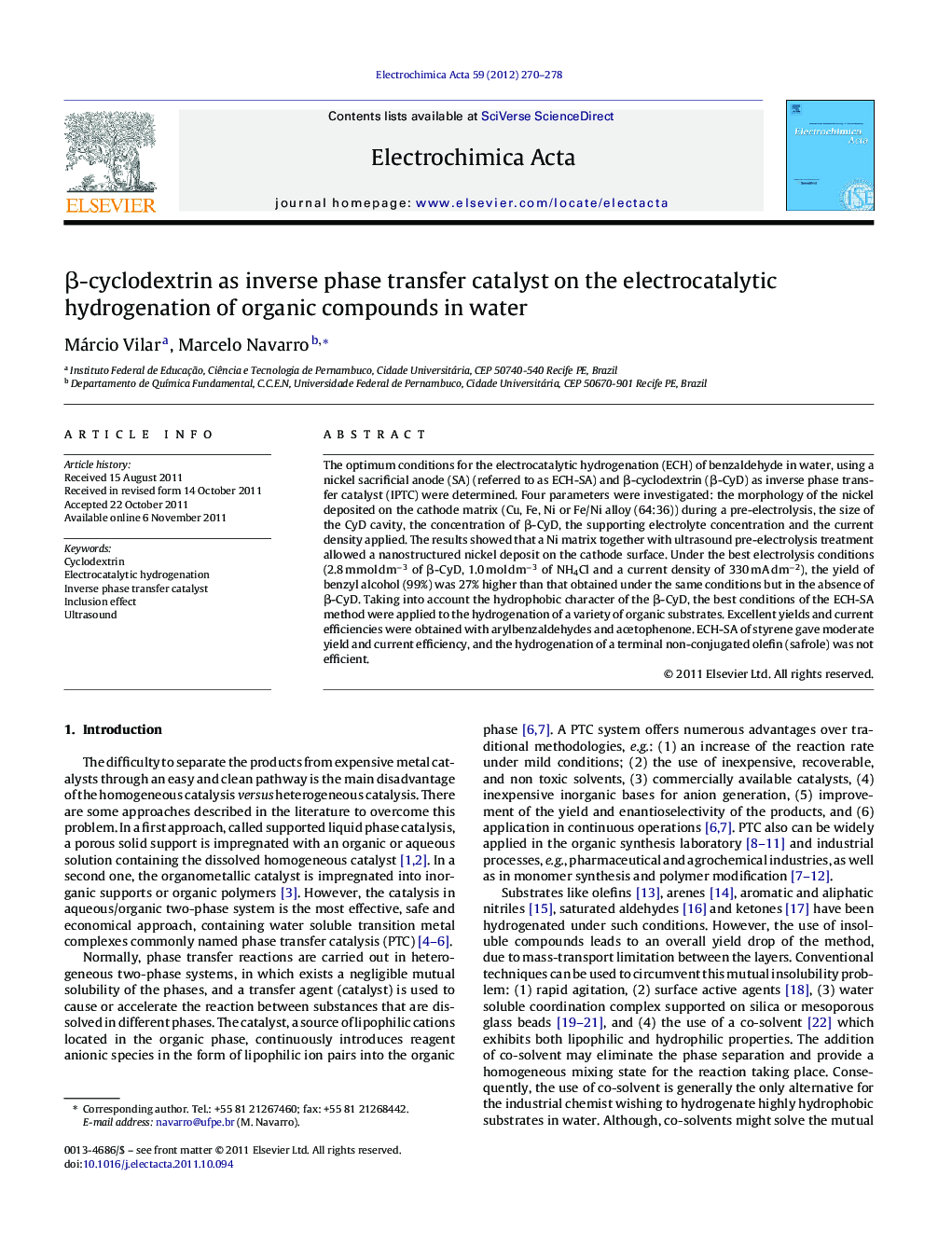| کد مقاله | کد نشریه | سال انتشار | مقاله انگلیسی | نسخه تمام متن |
|---|---|---|---|---|
| 189342 | 459678 | 2012 | 9 صفحه PDF | دانلود رایگان |

The optimum conditions for the electrocatalytic hydrogenation (ECH) of benzaldehyde in water, using a nickel sacrificial anode (SA) (referred to as ECH-SA) and β-cyclodextrin (β-CyD) as inverse phase transfer catalyst (IPTC) were determined. Four parameters were investigated: the morphology of the nickel deposited on the cathode matrix (Cu, Fe, Ni or Fe/Ni alloy (64:36)) during a pre-electrolysis, the size of the CyD cavity, the concentration of β-CyD, the supporting electrolyte concentration and the current density applied. The results showed that a Ni matrix together with ultrasound pre-electrolysis treatment allowed a nanostructured nickel deposit on the cathode surface. Under the best electrolysis conditions (2.8 mmol dm−3 of β-CyD, 1.0 mol dm−3 of NH4Cl and a current density of 330 mA dm−2), the yield of benzyl alcohol (99%) was 27% higher than that obtained under the same conditions but in the absence of β-CyD. Taking into account the hydrophobic character of the β-CyD, the best conditions of the ECH-SA method were applied to the hydrogenation of a variety of organic substrates. Excellent yields and current efficiencies were obtained with arylbenzaldehydes and acetophenone. ECH-SA of styrene gave moderate yield and current efficiency, and the hydrogenation of a terminal non-conjugated olefin (safrole) was not efficient.
Figure optionsDownload as PowerPoint slideHighlights
► β-cyclodextrin was tested as inverse phase transfer catalyst in the electrocatalytic hydrogenation process.
► Four cathode materials (Ni/Ni, Ni/Cu, Ni/Fe and Ni/Fe:Ni alloy) were tested.
► Ultrasound pre-electrolysis permitted a nanostructured Ni deposit on Ni cathode surface.
► A variety of unsaturated and carbonylated compounds were hydrogenated.
► Excellent hydrogenation yields and current efficiencies were reached.
Journal: Electrochimica Acta - Volume 59, 1 January 2012, Pages 270–278